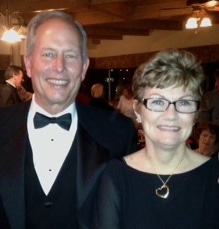Donor advised funds and private foundations are two ways to manage your charitable funds while supporting charities of your choice over time. Knowing the benefits and requirements of these two options can help you make the best decision for achieving your philanthropic goals. Many donors find that a donor advised fund allows them to accomplish their charitable giving as effectively as a foundation, but with less administrative time and expense. For detailed information about donor advised funds and private foundations see our chart of comparison of these two approaches.
It may be most helpful for those contemplating this decision to hear from donors who have had both a private foundation and a donor advised fund, so we asked two of our donors to share their experience. The following Q&A is provided by Mr. and Mrs. Dale Snyder, who transferred a private foundation to a donor advised fund at the Rancho Santa Fe Foundation.
What led to your decision to set up a private foundation?
The Brooke Foundation was formed by our family in memory of our daughter, Brooke Shannon Snyder. She was killed by a drunk driver in San Francisco on August 25, 2002. Brooke was an avid reader her whole life. We thought a foundation dedicated to early childhood literacy would be a fitting tribute, since being able to read is the basis of academic achievement and success in life. Brooke graduated with honors from Miami University, Ohio and received her law degree from the University of Chicago Law School in 2000.
What was the process for setting up the foundation?
Setting up a private 501(c)3 nonprofit is complicated and expensive. We were very fortunate to have the law firm that Brooke worked for, Latham & Watkins LLC, do much of the work for us, pro bono, as a tribute to her.
What was required for managing and administering the foundation?
Once the corporation was established and nonprofit status approved, we were required to annually file exempt tax forms to both federal (990) and state (199). These forms are complicated and require great detail about the foundation’s financials, structure and operations. Also, there are requirements for periodic formal meetings, documented minutes and annual election of officers. In addition to the legal administration, we managed the foundation’s assets and investments.
What led you to your decision to transfer The Brooke Foundation to a donor advised fund at the RSF Foundation?
We operated the nonprofit foundation ourselves for over five years. Making grants, ordering and delivering books throughout San Diego County, and planning and volunteering for events was all fun. It was hard work, but very rewarding. However, all of the legally required record keeping and tax filings was very hard work and not fun at all.
How did you make grant decisions?
We began making grants based on our mission statement: “dedicated to providing literacy and educational enrichment opportunities for children in need.” We were active at San Diego Botanic Gardens (then Quail Botanic Garden), and as soon as our foundation was established, SDBG was looking for sponsorship for a preschool educational program for low-income children. The program was already designed and had volunteers ready to go, but needed funds for transportation. The program nicely fit our mission. Along with the necessary bus trips, The Brooke Foundation provided a new book for each child and monetary and volunteer support for the program. Other mission –focused programs that we sought out, or that found us through friends and associates, included: North County Community Services, Reach Out and Read San Diego, the San Diego County Library matching grant campaign, and the Lynx Foundation.
How have your administration and grantmaking experiences been different with a donor advised fund than with a private foundation?
The process of grantmaking is simple – we are able to fill out a form online, and the RSF Foundation takes care of it. All of the tedious administration we used to do is eliminated. Best of all, our investments are managed far better than we could do ourselves.
The only downside is not being able to personally order and deliver books. But we have had the benefit of expanding our knowledge of grantmaking, learned about many more worthy organizations and widened our mission to include areas we are sure our daughter would have supported.





